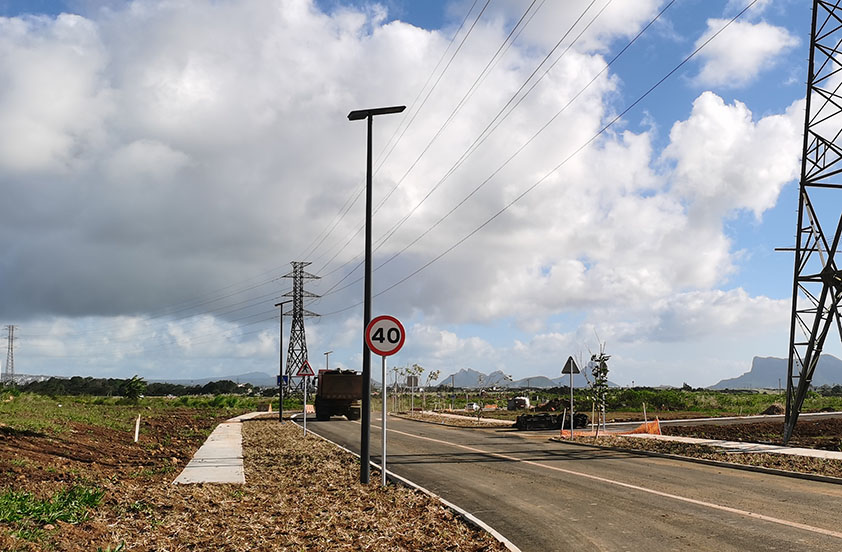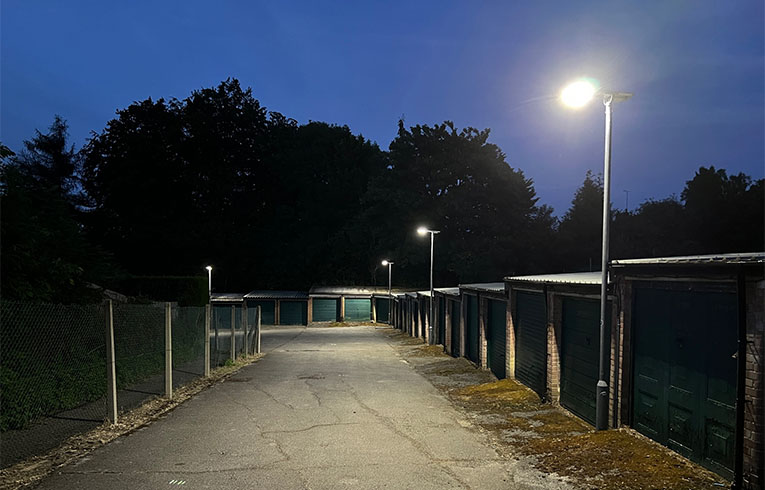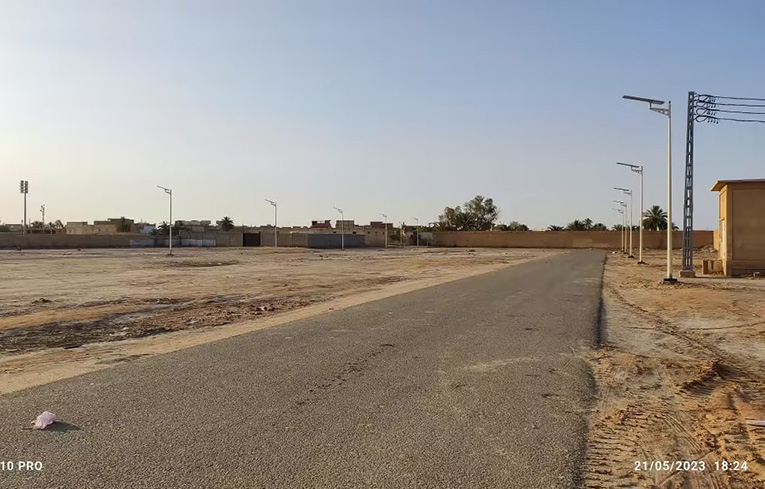What exactly is the configuration of a solar street light?
A solar street light usually consists of the following main components, the configuration of which can vary depending on the manufacturer and specific model:
Solar Photovoltaic Panel (SPP): one of the core components of a solar street light, used to convert solar energy into electricity. These panels are usually mounted on top of or near the street light to maximize sunlight absorption.
LED Lamp (Light Emitting Diode): LED lamps are usually used to provide illumination, LED lamps have high efficiency, long life and low energy consumption, is a common light source for solar street lights.
Battery: Batteries are used to store energy collected from solar panels during the day to provide power at night or on cloudy days. Usually rechargeable lithium batteries or lead-acid batteries are used.
Controller: The controller is the key part to manage the solar street light system. It controls the battery charging and discharging process, ensures that the battery powers the LEDs at the right time, and monitors the performance of the system.
Light Sensor: The light sensor is used to detect the ambient light intensity to determine when to turn the solar street light on or off. This helps to conserve energy by providing light only when it is needed.
Aluminum or Magnesium-Aluminum Alloy Mounting Bracket: Brackets used to support solar panels and lamps. These brackets are typically corrosion-resistant and durable.
Lampshade and Pole: The lampshade is used to protect the LEDs and emit light, while the pole is used to mount the entire solar street light system.
Cables and Connectors: Used to connect the various components to ensure that energy transfer and data exchange occurs properly.

Factors that determine the price of solar street lights
Power and Brightness: The power and brightness of a solar street light directly affects the price. Higher power and brighter street lights are usually more expensive because they require larger solar panels and batteries and more LED lights.
Solar Panel Quality and Efficiency: The quality and efficiency of the solar panel will affect the price. Efficient solar panels absorb more solar energy in a shorter period of time, thus reducing the need for batteries and battery capacity.
Battery type and capacity: The type and capacity of the battery is also an important factor in determining the price. Lithium-ion batteries are usually more expensive than lead-acid batteries, and high-capacity batteries can add to the cost.
Materials and manufacturing quality: Solar street lights made with high-quality materials and manufacturing processes usually cost more because they are more durable and provide reliable performance over a longer period of time.
Controllers and smart features: Some solar street lights are equipped with advanced controllers and smart features such as remote monitoring, automatic dimming, and operation and maintenance reports, which add to the price.
Installation and Maintenance Costs: Installation and maintenance costs of solar street lights may also be included in the total price, especially if some services are integrated.
Brand and Manufacturer: Well-known brands are usually priced higher as they usually offer better after-sales services and warranties.
Geographic location and market conditions: Prices of solar street lights may vary depending on geographic location and market demand. In some areas, the government may offer subsidies or incentive programs, which may affect the price.
Scale and bulk purchase: Buying on a large scale usually results in better prices. Therefore, the number of quantities purchased may also affect the price of solar street lights.

- How many watts are the solar panels and are they monocrystalline or polycrystalline?
Solar panel wattage and crystal type will vary depending on the specific solar panel model and manufacturer.
Here are some common solar panel specifications:
Monocrystalline solar panels: monocrystalline solar panels typically have a higher conversion efficiency, so they can produce more electricity in the same area. Common monocrystalline solar panels range in wattage from 100 watts to 400 watts, but higher power models are also available.
Polycrystalline solar panels: Polycrystalline solar panels are usually cheaper than monocrystalline panels, but their conversion efficiency is usually lower. Polycrystalline solar panels also come in a wide range of wattages, from tens to hundreds of watts.
- The price of street light does not depend on the number of lamp beads, it depends on whether the street light beads are high-power or low-power, and what is the quality of the lamps.
Bead Power: The power of the beads in a solar street light is an important factor. Larger power LED light beads usually produce more light, so the price may be higher. Choosing the appropriate lamp bead power depends on the lighting needs of the street light and the application environment.
Fixture Quality: The quality of the fixtures for street lights is one of the key factors affecting the price. High-quality fixtures are usually made of durable materials that can withstand harsh weather conditions and provide long-term reliable performance.

- The parameters of the light poles should be compared, all affecting the price.
Material: light poles can be made of different materials, such as aluminum alloy, steel, stainless steel and so on. Different materials cost differently and are also affected by factors such as corrosion resistance and durability.
Height: The height of the pole affects the range and effectiveness of the illumination, so taller poles usually require more materials and engineering, and therefore may be more expensive.
Diameter: The diameter of a light pole also affects its structural stability and appearance. Larger diameter poles usually require more materials and therefore may be more expensive.
Anti-corrosion coatings: Some light poles may require additional anti-corrosion coatings to increase their durability, which can add to the cost.
Wind Loads and Burial Depth: Light poles need to be designed with local wind loads and burial depth in mind to ensure stability. Higher wind load requirements and depths may require a more robust light pole structure, which can increase costs.
Installation and Transportation: The cost of installing and transporting light poles also needs to be taken into account. Larger or heavier light poles may require more labor and resources to install and transport, and therefore may cost more.